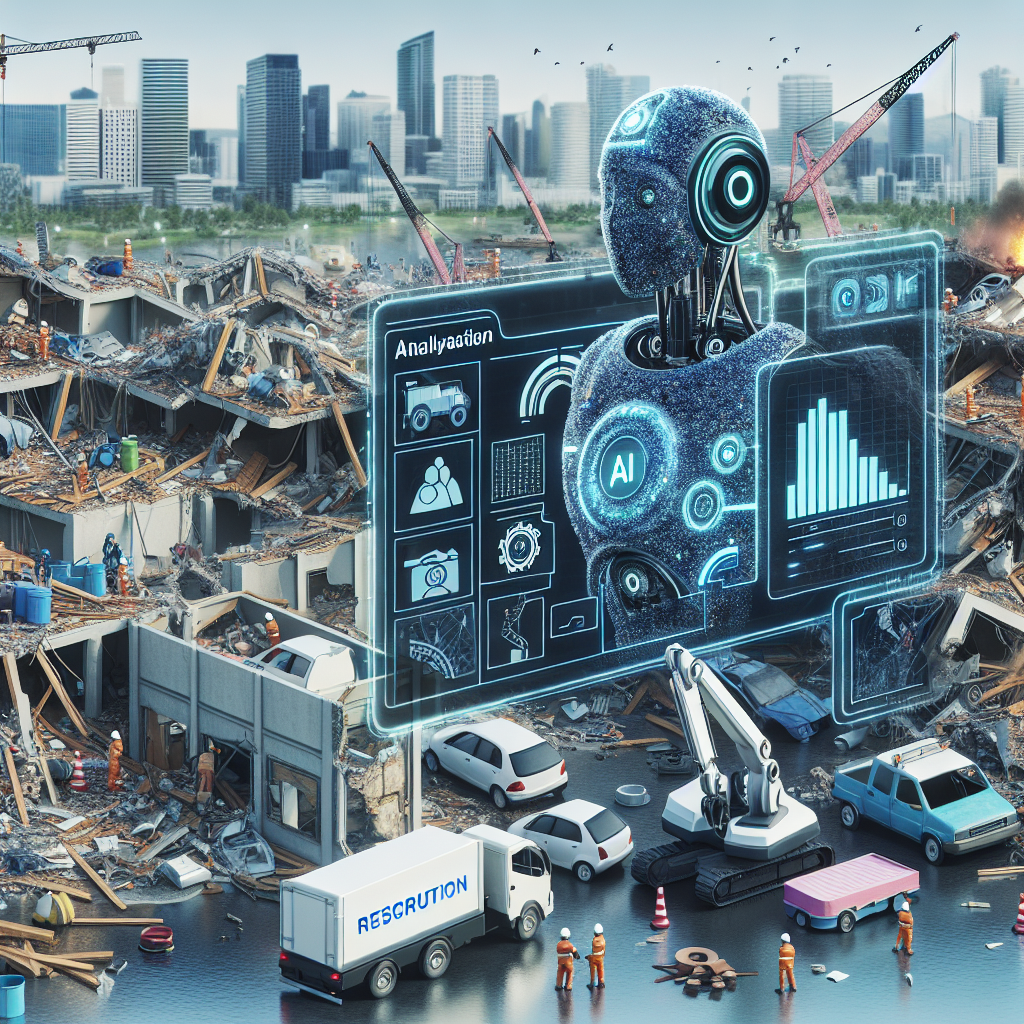The Use of AI in Disaster Recovery and Reconstruction
In recent years, the frequency and severity of natural disasters have increased significantly, leading to a greater need for effective disaster recovery and reconstruction efforts. In response to this growing challenge, many organizations and governments are turning to artificial intelligence (AI) to improve their disaster response and recovery processes. AI has the potential to revolutionize disaster management by providing real-time data analysis, predictive modeling, and decision-making tools that can help organizations respond more quickly and effectively to disasters.
AI can be used in various ways in disaster recovery and reconstruction efforts. One of the key applications of AI in this context is in predictive modeling. By analyzing historical data on natural disasters, AI algorithms can help organizations predict when and where disasters are likely to occur, allowing them to take proactive measures to mitigate the impact of these events. For example, AI can be used to predict the path of a hurricane, allowing authorities to evacuate residents from at-risk areas before the storm hits.
AI can also be used to analyze satellite imagery and other data sources to assess the extent of damage caused by a disaster. This information can help organizations prioritize their response efforts and allocate resources more effectively. For example, AI can be used to identify areas that have been most severely affected by a hurricane or earthquake, allowing relief workers to focus their efforts on those areas first.
Another important application of AI in disaster recovery and reconstruction is in the field of robotics. Robots equipped with AI technology can be used to perform tasks that are too dangerous or difficult for humans to undertake. For example, drones equipped with AI can be used to survey disaster-affected areas and assess the extent of damage. Similarly, robots equipped with AI can be used to clear debris, deliver supplies, and even perform search and rescue operations in disaster zones.
AI can also be used to improve communication and coordination during disaster response efforts. By analyzing data from social media, news reports, and other sources, AI algorithms can help organizations identify emerging trends and prioritize their response efforts accordingly. AI can also be used to automate the coordination of resources and personnel, ensuring that aid is delivered to where it is needed most quickly and efficiently.
In addition to these applications, AI can also be used to facilitate the reconstruction of infrastructure and communities in the aftermath of a disaster. By analyzing data on building codes, construction materials, and other factors, AI algorithms can help organizations design more resilient structures that are better able to withstand future disasters. AI can also be used to optimize the allocation of resources during the reconstruction process, ensuring that limited resources are used most effectively.
Overall, the use of AI in disaster recovery and reconstruction efforts has the potential to greatly improve the effectiveness and efficiency of these processes. By providing real-time data analysis, predictive modeling, and decision-making tools, AI can help organizations respond more quickly and effectively to disasters, saving lives and reducing the long-term impact of these events.
FAQs
Q: How can AI help in predicting natural disasters?
A: AI can analyze historical data on natural disasters to identify patterns and trends that can help predict when and where disasters are likely to occur. By analyzing factors such as weather patterns, seismic activity, and other indicators, AI algorithms can generate predictive models that can help authorities take proactive measures to mitigate the impact of these events.
Q: How can AI be used to assess the extent of damage caused by a disaster?
A: AI can analyze satellite imagery, drone footage, and other data sources to assess the extent of damage caused by a disaster. By analyzing these images and data, AI algorithms can help organizations prioritize their response efforts and allocate resources more effectively.
Q: How can robots equipped with AI technology help in disaster recovery efforts?
A: Robots equipped with AI can perform tasks that are too dangerous or difficult for humans to undertake, such as surveying disaster-affected areas, clearing debris, delivering supplies, and performing search and rescue operations. By using robots equipped with AI, organizations can improve the efficiency and effectiveness of their disaster response efforts.
Q: How can AI help in the reconstruction of infrastructure and communities after a disaster?
A: AI can analyze data on building codes, construction materials, and other factors to help organizations design more resilient structures that are better able to withstand future disasters. AI can also optimize the allocation of resources during the reconstruction process, ensuring that limited resources are used most effectively.
In conclusion, the use of AI in disaster recovery and reconstruction efforts has the potential to greatly improve the effectiveness and efficiency of these processes. By providing real-time data analysis, predictive modeling, and decision-making tools, AI can help organizations respond more quickly and effectively to disasters, saving lives and reducing the long-term impact of these events.

